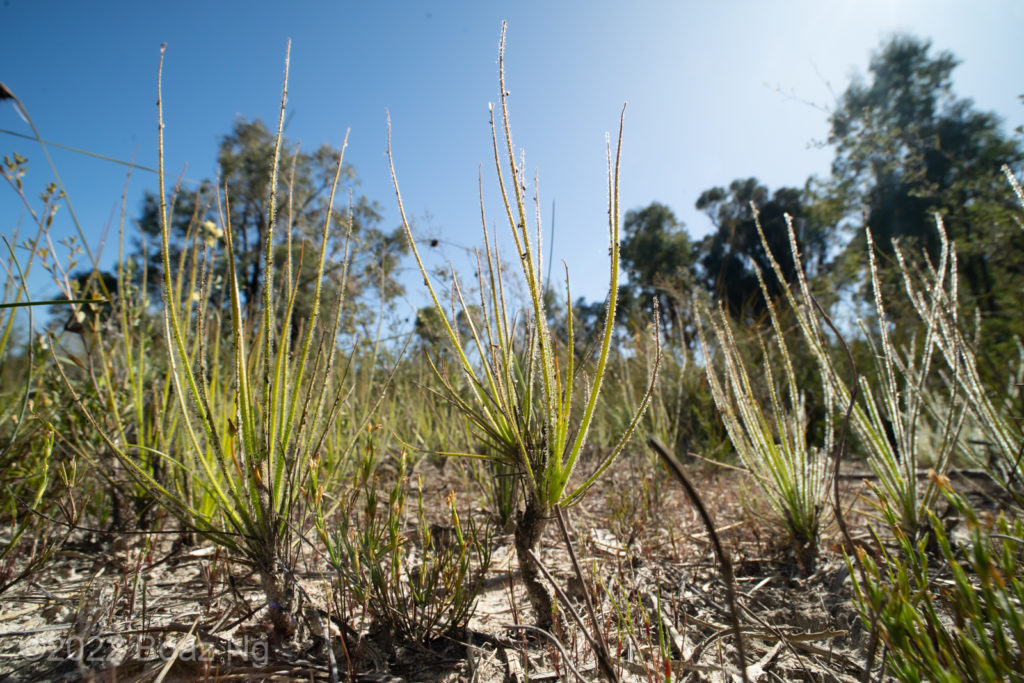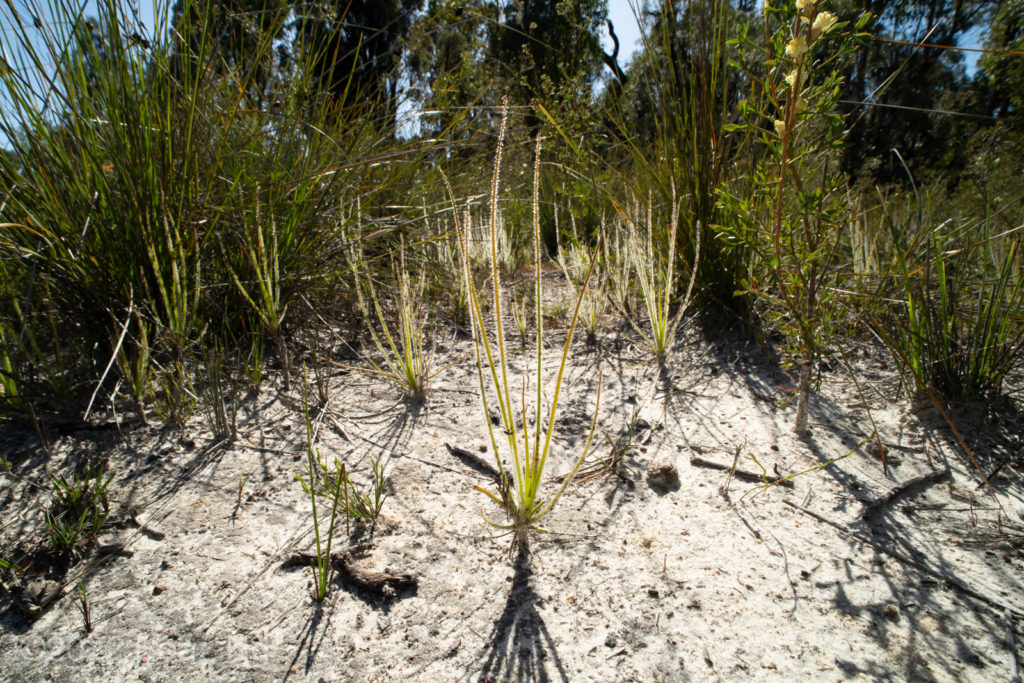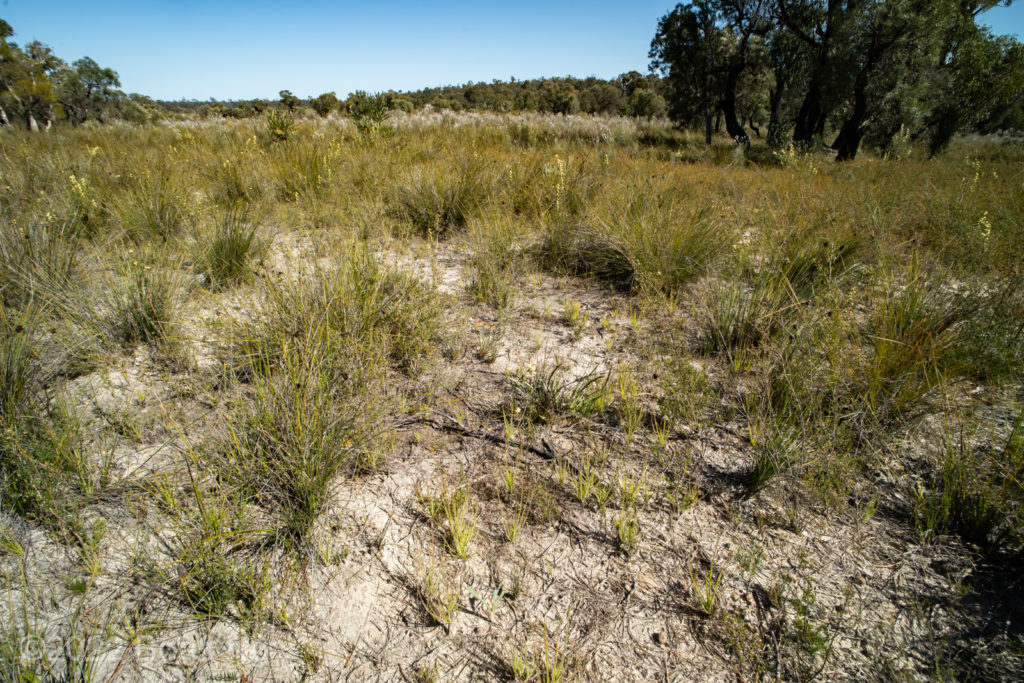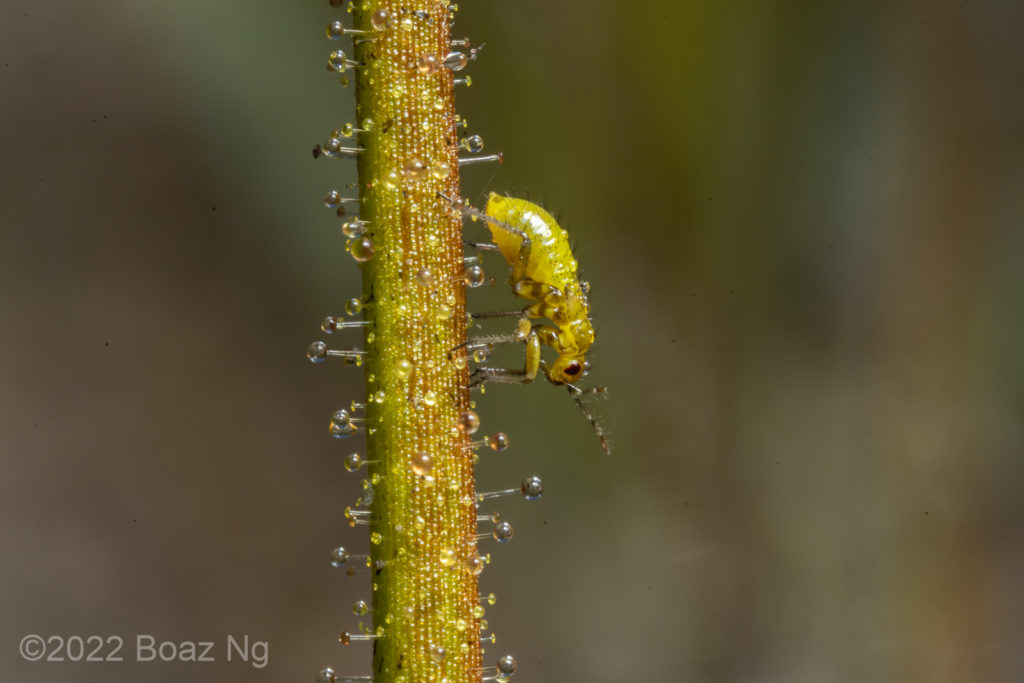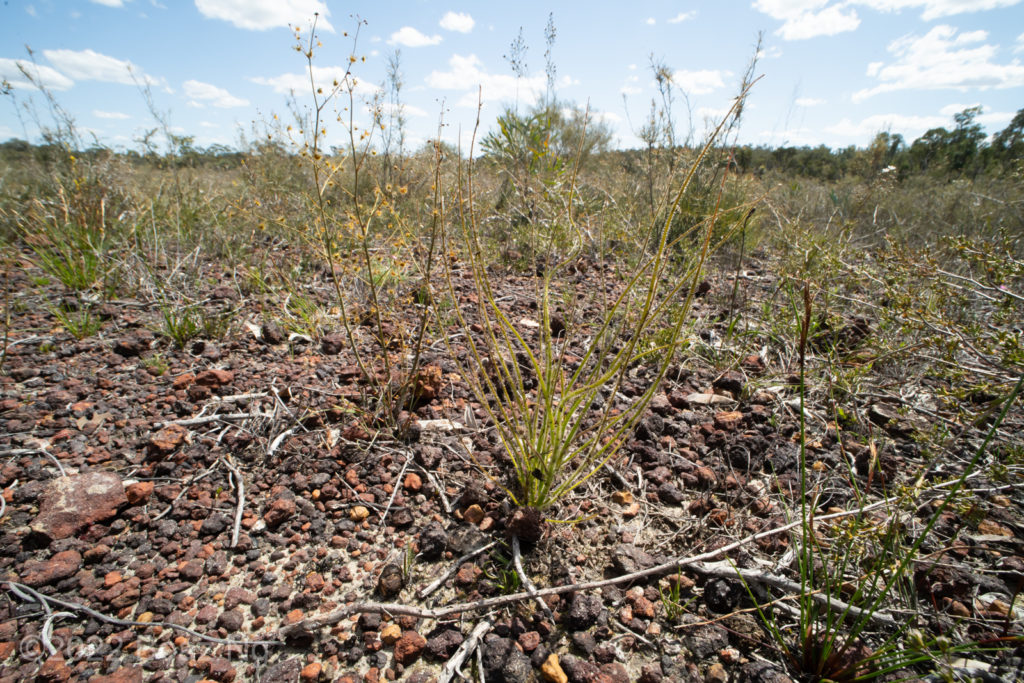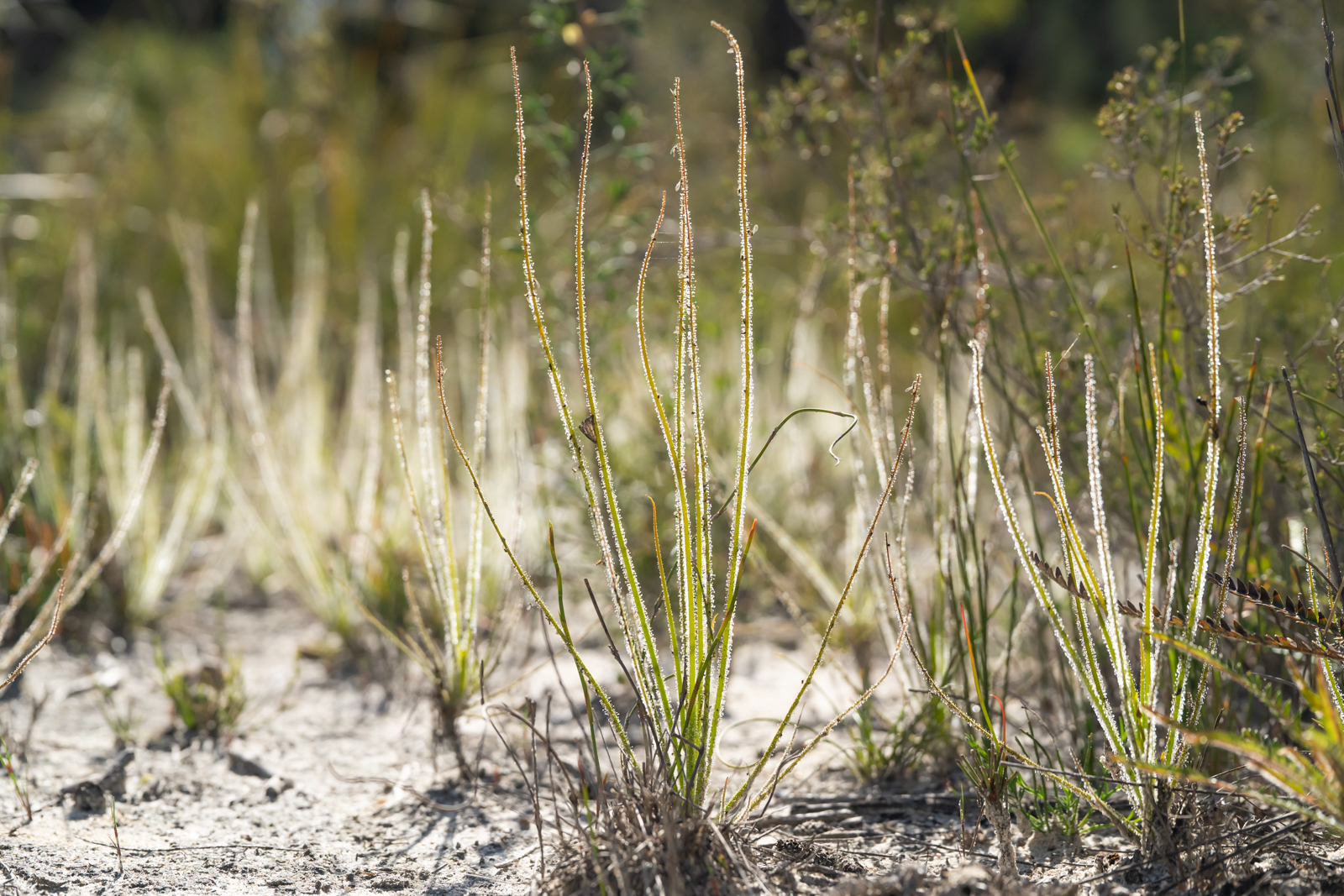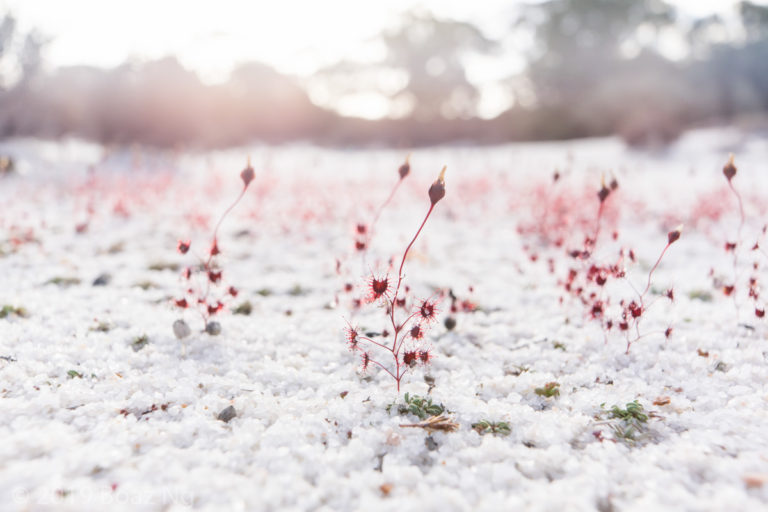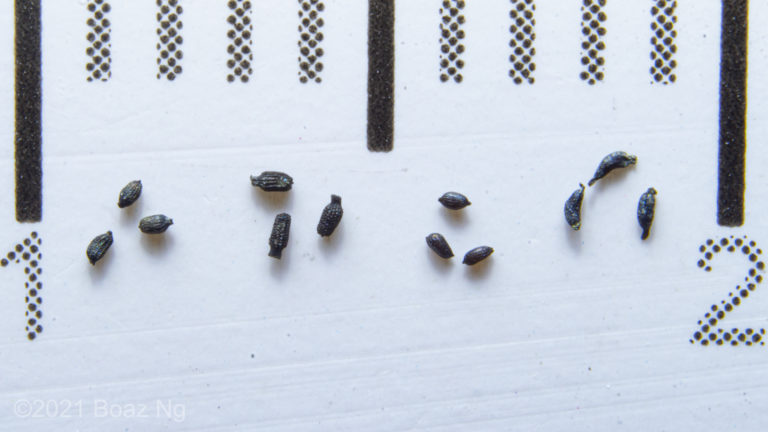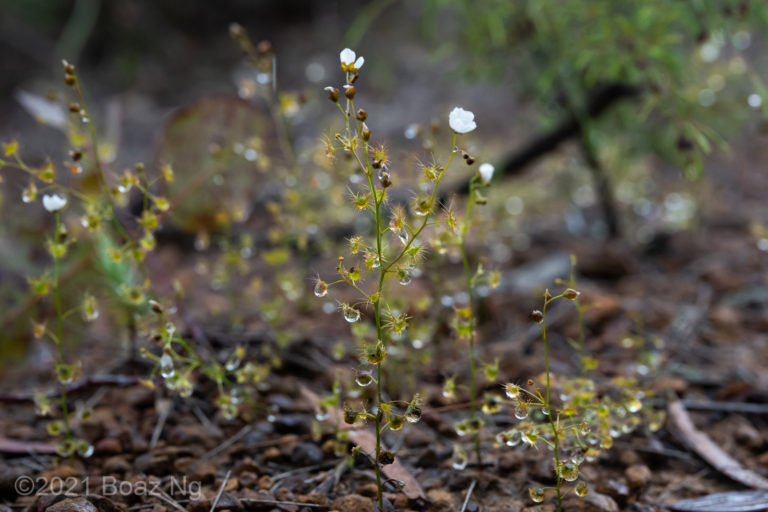Byblis gigantea is a perennial rainbow plant endemic to south-west Western Australia. The species is named for its large size relative to other Byblis species.
Byblis gigantea is a medium-sized plant that grows up to 45 cm in height. The active stems often emerge from woody stubs. The plants rarely branch, if at all. Fleshy, linear stems around 15 cm long emerge from a thick central stem. The entire plant is covered in stalked glands of various lengths, as well as tiny glands in ridges along the length of the leaves. The peduncles are very similar to the leaves. The flowers are large and purple, around 4cm in diameter. The anthers of the stamens (yellow pollen-bearing parts) are longer than their supporting filaments.
The species grows in deep sand at the periphery of swamps that are seasonally wet or inundated. It is recorded from Perth to Mogumber, and in the Perth Hills east of Perth. It is likely to be extinct within Perth due to habitat destruction and poaching. Flowering occurs in late spring and summer, followed by a period of dry dormancy.
Byblis gigantea is closely related to B. lamellata, sharing a perennial growth habit and similar bushy morphology. Byblis gigantea generally grows at the edge of swamps closer to Perth whereas B. lamellata grows in deep, well-drained sand in more northerly environments closer to Enneaba. Byblis gigantea does not readily branch while B. lamellata often branches. The seed surface morphology is supposed to be a keyable feature but I have observed inconsistencies.
